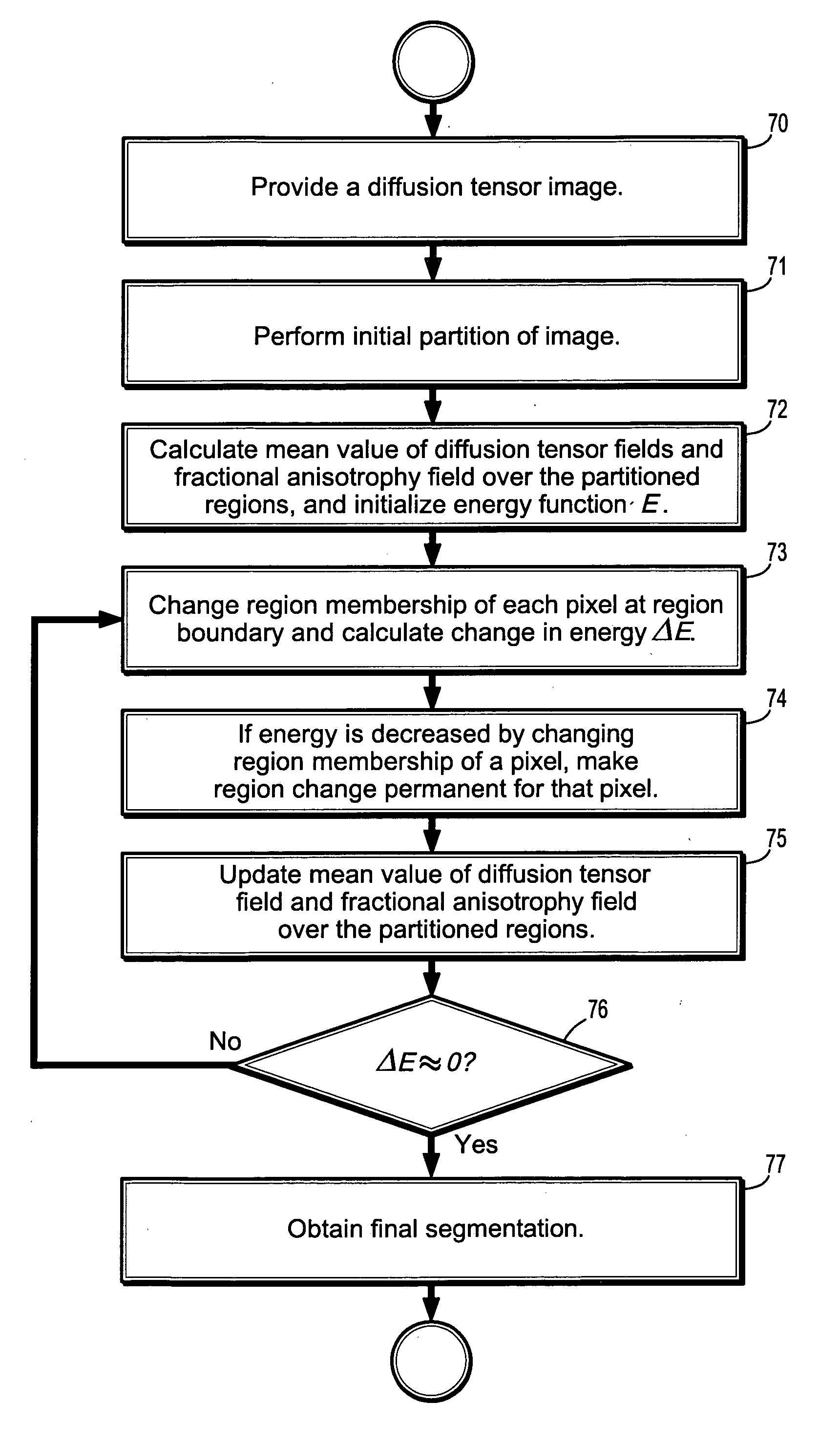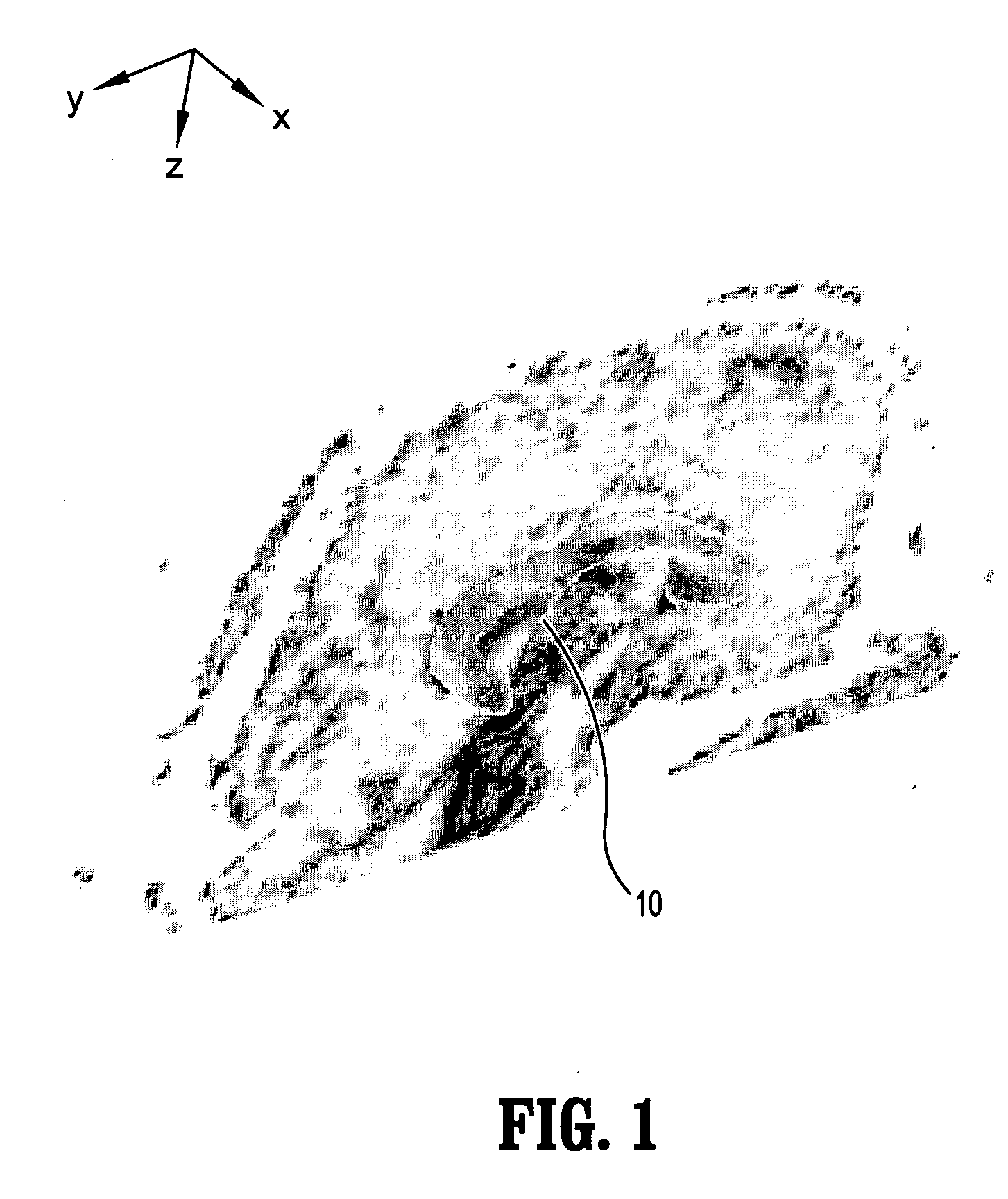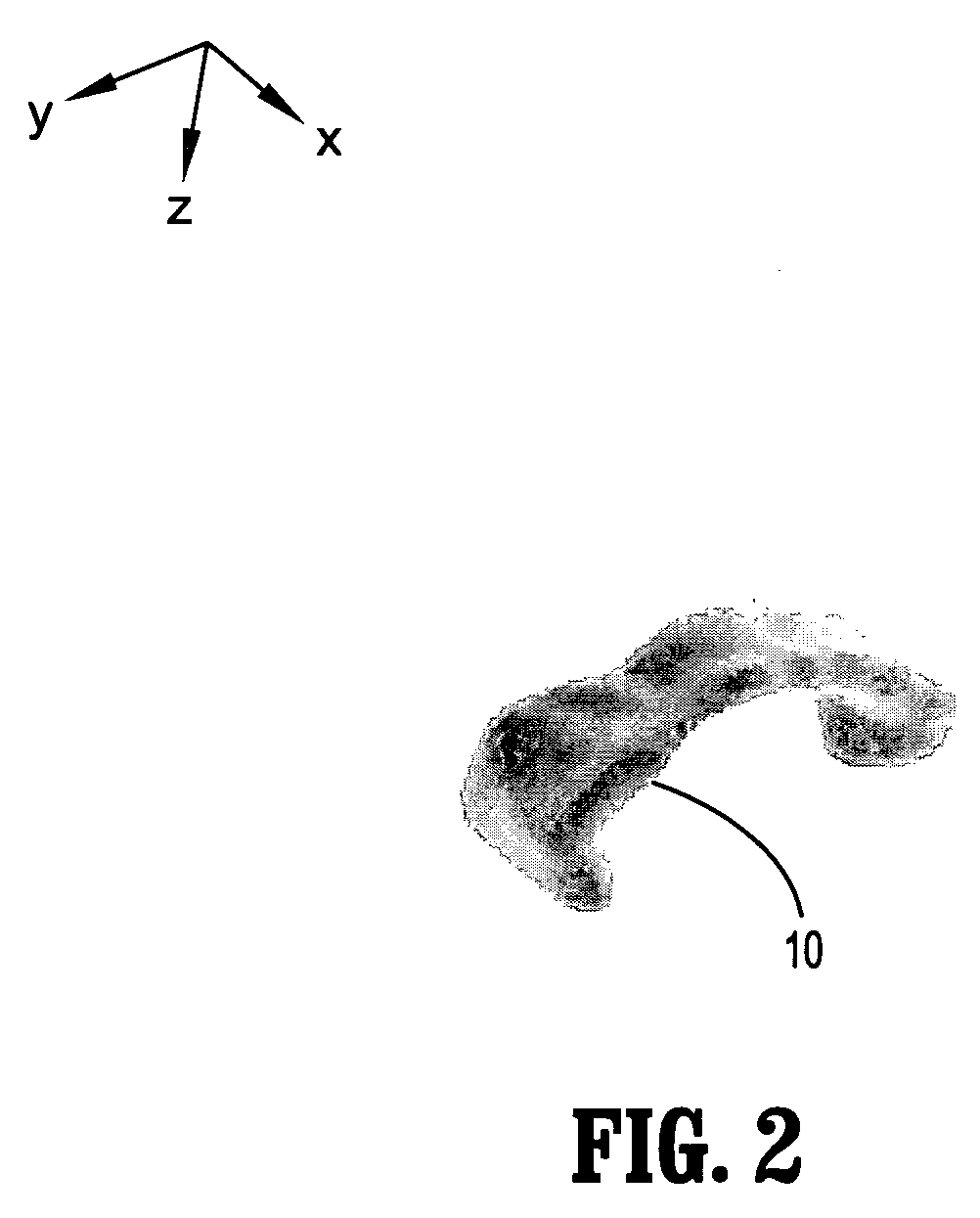System and method for fast tensor field segmentation
a tensor field and segmentation technology, applied in the field of segmentation of objects, can solve the problems of few techniques that address the segmentation of the internal structure of white matter, and achieve the effect of facilitating the efficient segmentation of the tensor field
- Summary
- Abstract
- Description
- Claims
- Application Information
AI Technical Summary
Benefits of technology
Problems solved by technology
Method used
Image
Examples
Embodiment Construction
[0029] Exemplary embodiments of the invention as described herein generally include systems and methods for segmenting a tensor field such as that obtained from diffusion tensor MRI. A tensor field segmentation method according to an embodiment of the invention incorporates a new discriminant for tensors into an active contour model without edges. The discriminant employed according to an embodiment of the invention is based on information theory, which follows from the physical phenomena of diffusion, is affine invariant and allows for the computation of the mean of the tensor field in closed form. A model according to an embodiment of the invention is implemented in a level set framework to take advantage of the easy ability of this framework to change topologies when desired. A technique for the segmentation of probability density fields according to an embodiment of the invention can extract anatomical structures in anisotropic biological tissues such as the brain white matter. ...
PUM
 Login to View More
Login to View More Abstract
Description
Claims
Application Information
 Login to View More
Login to View More - R&D
- Intellectual Property
- Life Sciences
- Materials
- Tech Scout
- Unparalleled Data Quality
- Higher Quality Content
- 60% Fewer Hallucinations
Browse by: Latest US Patents, China's latest patents, Technical Efficacy Thesaurus, Application Domain, Technology Topic, Popular Technical Reports.
© 2025 PatSnap. All rights reserved.Legal|Privacy policy|Modern Slavery Act Transparency Statement|Sitemap|About US| Contact US: help@patsnap.com



